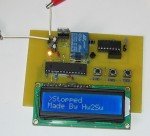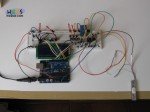
We have already seen till now how we have constructed our project in PCB .
Liquid filler at this point needs calibration.
In this article we will discuss the calibration method.
The first step is to dimension correctly the RG resistor.
From the weight sensors article we already know that :
a) For a 1Kg load cell we are going to need Gain=1,07421875/0,005473=196 for a 1.1V arduino reference analogReference(INTERNAL); So we need a Rg=312 Ohm.
b) For a 20Kg load cell we need a Gain = 3925 for a 1.1V arduino reference analogReference(INTERNAL);
So we need a Rg=15 Ohm.
...continue reading "Liquid Filling Machine – Liquid Filler Part 4"


